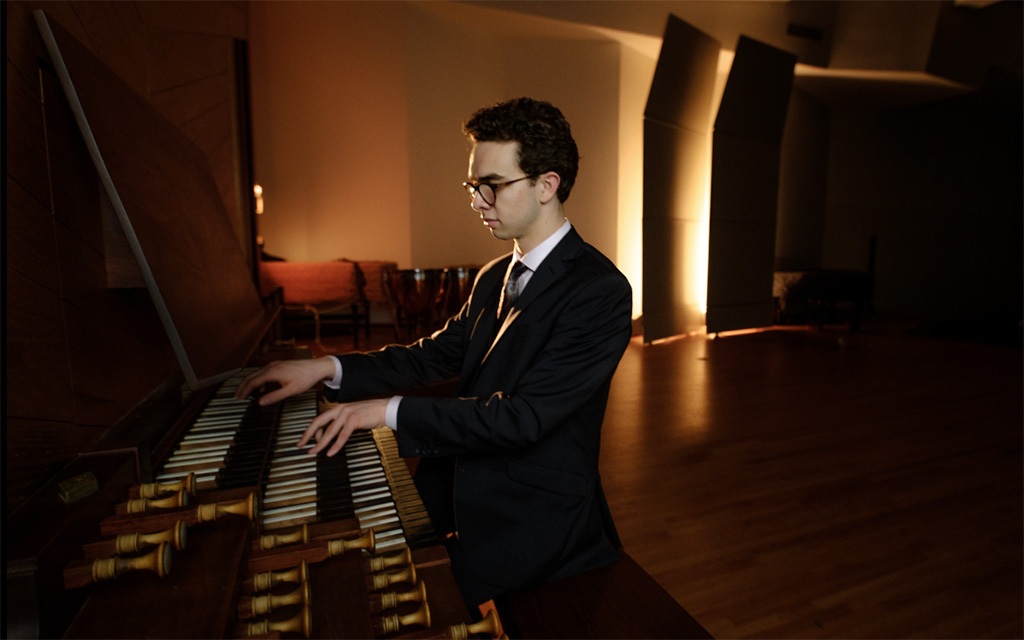Verona Quartet: Performance Notes
The program celebrates Beethoven’s 250th birth year under the prism of contrast. How will Beethoven sound after hearing the whimsical Clarinet Quintet that Spanish composer Isabel Urrutia wrote just eight years ago? This haunting work recreates the composer’s fascination with the sound of the wind and, in a mere 10 minutes, will set the stage to hear Beethoven from a fresh new angle. The two works by Beethoven in the program offer the widest possible chronological span in Beethoven’s immense contribution to the transition of Classicism into Romanticism: Beethoven’s Viola Quintet in C minor, Op. 104—the “other” viola quintet, not the famous “Storm” Viola Quintet—is in fact the composer’s own orchestration of his Op. 1 No. 3 Piano Trio in C Minor—the one his teacher Haydn suggested to be withheld from publication. The key of C minor here, like in Beethoven’s Fifth Symphony or “Pathétique” Piano Sonata, is no coincidence, underlying his uniquely dramatic style.
The program ends with Beethoven’s last string quartet, a marked departure from the rest of his late quartets, which in the last movement carries the title “The difficult decision,” complete with a one-line epigraph presenting the two main themes in that movement: a low three-note theme with the words “Must it be?” and a high three-note theme (a reverse of the first), stated twice, and with the words “It must be! It must be!”
Much has been written about the meaning of the words in the last movement, and Beethoven had no small part in creating this controversy when he wrote a misleading letter to his publisher, Moritz Schlesinger. But Beethoven had done this before. When he submitted his Op. 131 quartet in seven movements to his publisher, he wrote: “put together from pilferings from this and that,” which caused the publisher such concern that Beethoven had to assure the publisher that the music was completely original, and his remark was only a joke.
If we focus on the music to find an answer, the start of the last movement is Grave and serious, but that lasts 12 measures only. The music that follows is mostly humorous. In fact, when the Grave section returns, it feels like a parody.
According to Thayer, Beethoven’s biographer, the words in the last movement represent nothing more than the composer’s poking fun at someone whom he felt wanted to take advantage of his beloved Schuppanzigh String Quartet. (Beethoven had studied violin with Ignaz Schuppanzigh when he arrived in Vienna in 1792 and the Schuppanzigh String Quartet premiered many of Beethoven’s groundbreaking quartets.) Presumably, Beethoven refused to lend Ignaz Dembscher, a government official and friend, a copy of his quartet, Op. 130, because Dembscher had not attended the premiere performance by the Schuppanzigh String Quartet. Wanting to set matters right, Dembscher asked Carl Holz to intervene. (Holz was the second violinist in the Schuppanzigh String Quartet that premiered Op. 135 and a good friend of Beethoven’s.) Holz suggested that Dembscher send Schuppanzigh the cost of a ticket to the premier performance: 50 florins. Dembscher asked, “Must it be?” and Holz replied “It must be!” When Holz told Beethoven the story, the composer burst into laughter and immediately sat down to compose a canon on this dialogue. Later on, Beethoven expanded the musical material of the canon into the quartet’s last movement, which ends in joyful laughter. This is a remarkable conclusion for what is still considered today to be the greatest string quartet cycle ever written.
Contributed by UNCSA Faculty Artist Oskar Espina Ruiz
February 14, 2020





